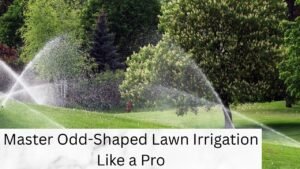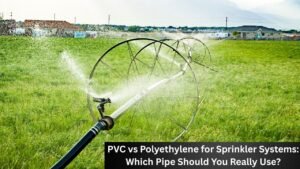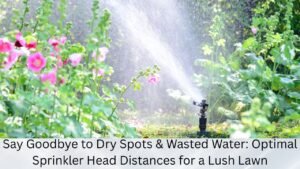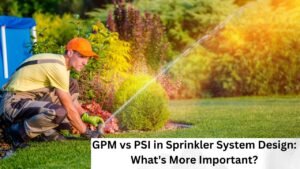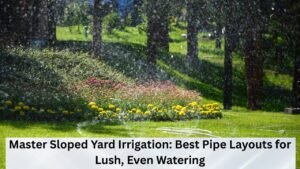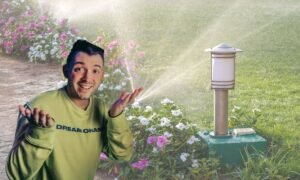Sprinkler valves are the backbone of your irrigation system, controlling water flow to keep your lawn lush and green. But how long do they last?
Understanding the lifespan of a sprinkler valve is essential for maintaining a healthy lawn and avoiding unexpected repairs. In this guide, we’ll explore the factors that influence the lifespan of sprinkler valves, typical longevity, signs of wear, and maintenance tips to help you get the most out of your system.
Typical Lifespan of a Sprinkler Valve

Understanding Lifespan:
Sprinkler valves are designed to last, but like all mechanical components, they have a finite lifespan. Typically, sprinkler valves last between 10 to 15 years.
However, this range can vary based on factors such as the quality of the valve, the environment, and how well the system is maintained.
Factors Influencing Lifespan:
Several factors can influence how long a sprinkler valve lasts:
- Material Quality: Higher quality materials like brass or stainless steel tend to last longer than cheaper plastic valves.
- Water Quality: Hard water, with high mineral content, can cause buildup in the valves, leading to reduced lifespan.
- Installation Quality: Proper installation is crucial. A poorly installed valve may experience leaks or pressure issues, shortening its lifespan.
- Climate Conditions: Regions with harsh winters or extremely hot summers can put additional strain on sprinkler valves, affecting their longevity.
Lifespan by Valve Type: To give a more detailed understanding, here’s a table that outlines the typical lifespan of different types of sprinkler valves:
| Valve Type | Typical Lifespan | Best Suited For |
|---|---|---|
| Solenoid Valve | 10-15 years | Electronic systems, precise control |
| Diaphragm Valve | 12-15 years | Durability, hard water resistance |
| PVC Valve | 8-12 years | Budget-friendly, moderate climates |
Signs Your Sprinkler Valve May Be Failing
Even with proper care, sprinkler valves will eventually show signs of wear. Recognizing these signs early can prevent more extensive damage to your irrigation system.
- Inconsistent Water Flow: If parts of your lawn are dry while others are overwatered, a failing valve could be to blame.
- Leaks Around the Valve: Water pooling around the valve box often indicates a leak, which can lead to significant water waste.
- Valve Doesn’t Open/Close Properly: A valve that remains stuck open or closed might have an issue with the solenoid or diaphragm, requiring repair or replacement.
- Frequent Cycling: If your sprinkler system cycles on and off more frequently than it should, this could be a sign of a malfunctioning valve.
How to Extend the Life of Your Sprinkler Valve
The Youtube video beloe: How Do Sprinkler Valves Work? Rain Bird Irrigation by Rain Bird breaks down the mechanics of sprinkler valves and how they regulate water flow. It offers a clear visual explanation, making it a handy guide for homeowners looking to understand their irrigation system better.
Proper maintenance is key to extending the life of your sprinkler valve. Here are some tips to help you maximize the lifespan of your valves:
1. Regular Inspection:
- Inspect your sprinkler system at the start of each watering season.
- Look for leaks, cracks, or signs of wear around the valves.
- Check for debris that may be blocking the valve or affecting its performance.
2. Seasonal Maintenance:
- Spring: Start the season with a full system check. Ensure all valves are functioning correctly and make any necessary adjustments.
- Summer: Monitor your system for overuse, particularly during heatwaves. Adjust your watering schedule to prevent strain on the valves.
- Fall: Prepare your system for winterization. Clear any debris and reduce water pressure to avoid stressing the valves.
- Winter: If you live in a region with freezing temperatures, make sure to fully winterize your system. Drain the water to prevent ice from damaging the valves.
3. Address Water Quality Issues:
- Consider installing a water softener if you have hard water. This can reduce mineral buildup in the valves.
- Regularly clean the valves to remove any accumulated debris or mineral deposits.
4. Proper Installation and Pressure Management:
- Ensure that valves are installed correctly and that the system is balanced for optimal water pressure. High pressure can cause valves to wear out more quickly.
Understanding the Costs of Replacing a Sprinkler Valve
Eventually, even with the best care, you may need to replace a sprinkler valve. Understanding the costs involved can help you budget for this necessary maintenance.
Average Replacement Costs: The cost to replace a sprinkler valve typically ranges from $60 to $120, depending on factors such as:
- Valve Type: Higher-end materials like brass or more sophisticated electronic valves will cost more.
- Labor: Professional installation can add to the cost, but it ensures the valve is properly installed.
- Location: Costs can vary based on regional labor rates and the complexity of the installation.
DIY vs. Professional Replacement:
- DIY Replacement: If you’re handy, replacing a sprinkler valve yourself can save money. However, it requires knowledge of your irrigation system and proper tools.
- Professional Service: Hiring a professional ensures the job is done right and can be worth the added expense, especially if the valve is in a difficult-to-access area.
Conclusion
Understanding the lifespan of your sprinkler valve is crucial for maintaining an efficient and effective irrigation system. While most valves will last between 10 to 15 years, factors like water quality, installation, and regular maintenance can greatly influence this lifespan. By staying vigilant for signs of wear and performing routine maintenance, you can extend the life of your sprinkler valves and keep your lawn in top condition.
When it’s time to replace a valve, consider the costs and whether it’s worth tackling the job yourself or calling in a professional. Either way, keeping your sprinkler system in top shape ensures a beautiful, green lawn with minimal hassle.
